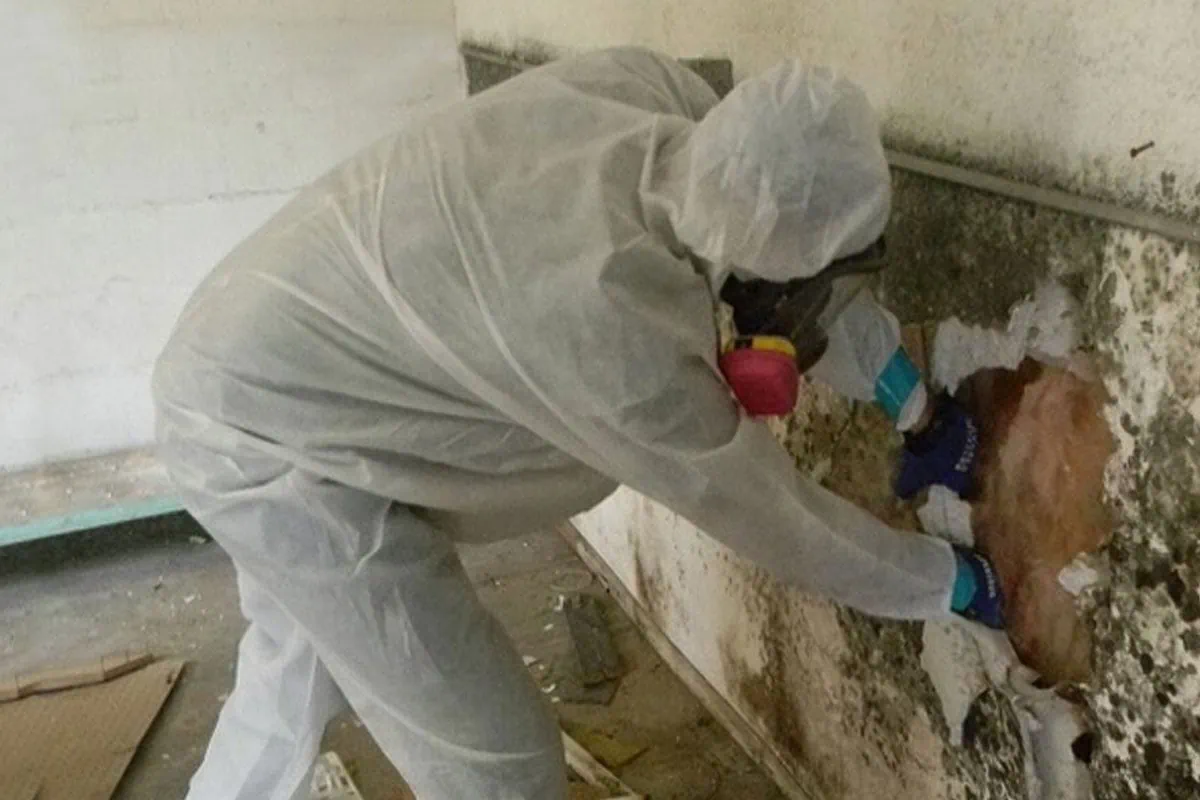How To Remove Mold And Mildew Odors From Your Home
Mold and mildew odors can make your home smell musty and unpleasant. These odors are not just annoying; they can also state the presence of mold, which can be harmful to your health. Mold spores can cause allergies and breathing problems. They are especially bad for at-risk people like kids, the elderly, and those with weak immune systems. This guide will show you simple steps to remove mold and mildew odors from your home, making it fresh and clean again. If you need professional help, consider services for mold removal Maine offers to ensure a thorough and safe solution.
1 Identify The Source
Locate the Mold
The first step in removing mold and mildew odors is to find where the mold is growing. Check damp, dark places like basements, bathrooms, and under sinks. Mold removal in Maine can also involve checking walls, ceilings, floors, and even inside your HVAC system. Look for discoloration or spots that appear fuzzy or slimy. Mold can be black, green, white, or other colors. Sometimes, you might even notice a persistent musty smell before you see any visible signs of mold.
Check for Leaks
Look for any water leaks that might be causing mold growth. Common places for leaks include around windows, roofs, and pipes. Even minor leaks can provide enough moisture for mold to thrive. Fixing these leaks is crucial to prevent further mold growth. Inspect areas around sinks, toilets, bathtubs, and showers, as well as any place where water pipes run. Remember to check your attic and basement for signs of roof leaks or groundwater seepage.
Use a Moisture Meter
If you have trouble locating mold, consider using a moisture meter. This tool can help you find hidden moisture in walls, floors, and ceilings. High moisture levels can indicate the presence of mold or areas at risk for mold growth.
2. Clean The Affected Area
Use Protective Gear
When cleaning mold remediation Maine, it's important to protect yourself from mold spores. Wear gloves, a mask, and goggles to avoid inhaling mold spores or getting them on your skin. Mold can cause allergic reactions, asthma attacks, and other health problems. Choose a mask rated N95 or higher to effectively filter out mold spores.
Mix A Cleaning Solution
Make a cleaning solution by mixing one cup of bleach with one gallon of water. You can also use commercial mold cleaners if you prefer. For a more natural solution, mix one-part white vinegar with one part water. Both bleach and vinegar are effective at killing mold but never mix them together, as this can create toxic fumes.
Scrub The Mold
Scrub the moldy area with a brush dipped in the cleaning solution. Be thorough to ensure you remove all the mold. Pay attention to nooks and crannies where mold can hide. After scrubbing, rinse the area with clean water and dry it completely. Use a clean cloth or sponge to remove any remaining residue. If the mold has penetrated porous materials like drywall, you may need to replace the affected materials to fully eliminate the mold.
Dispose Of Cleaning Materials Safely
After cleaning, dispose of any sponges, brushes, or cloths used to clean the mold. Seal them in a plastic bag and throw them away to prevent the spreading of mold spores. Wash your hands thoroughly after handling moldy items.

3. Use Dehumidifiers and Ventilation
Reduce Humidity
Mold thrives in humid environments. Use a dehumidifier to reduce the humidity level in your home. Aim for a humidity level below 60%, and ideally between 30-50%. Place the dehumidifier in the most affected areas, such as basements and bathrooms. Regularly empty the water container. Clean the dehumidifier as the manufacturer instructs.
Improve Ventilation
Good airflow helps prevent mold growth. Open windows and use fans to improve ventilation in your home. Ventilate areas like bathrooms and kitchens, where moisture is common. Use exhaust fans during and after showers and cooking to expel moisture-laden air. Ensure that your dryer vents outside to prevent moisture buildup inside your home.
Install Air Purifiers
Consider using an air purifier with a HEPA filter to capture mold spores and improve indoor air quality. Place the air purifier in areas where mold is likely to grow or where you notice mold odors. Regularly change the filters according to the manufacturer's recommendations.
4. Remove Odors With Natural Remedies
Baking Soda
Sprinkle baking soda on carpets and fabrics where mold odors are present. Let it sit for a few hours, then vacuum it up. Baking soda absorbs odors naturally and helps freshen the air. For persistent odors, you can mix baking soda with water to form a paste, apply it to the affected area, let it dry, and then vacuum it up.
Vinegar
Fill a spray bottle with white vinegar and spray it in areas where there is a musty smell. Vinegar neutralizes odors and helps kill mold. Allow the vinegar to sit for a few hours before wiping it away with a damp cloth. Vinegar is safe to use on most surfaces but test it on a small area first to ensure it doesn't cause any damage.
Activated Charcoal
Place bowls of activated charcoal in rooms with mold odors. Charcoal absorbs odors and helps keep the air fresh. You can find activated charcoal in the form of loose granules, bags, or even odor-absorbing products designed for home use. Replace the charcoal every few weeks to maintain its effectiveness.
Essential Oils
Essential oils, like tea tree oil, lavender oil, and eucalyptus oil, have natural properties. They can fight fungi and odors. Add a few drops of your chosen oil to a spray bottle filled with water and spray it around the affected areas. Not only will this help eliminate odors, but it will also leave a pleasant scent in your home.
5. Prevent Future Mold Growth
Keep Areas Dry
Keep your home dry to prevent mold. Wipe up spills immediately and fix any leaks. Use exhaust fans in bathrooms and kitchens to reduce moisture. Consider using moisture-absorbing products. You can use things like silica gel packs or moisture absorbers in damp areas.
Regular Cleaning
Mold testing Maine is an essential step to ensure the safety of your home. Regular cleaning is vital to prevent the growth of mold, particularly in areas prone to moisture accumulation. Pay close attention to spots like bathrooms, basements, and kitchens, as these are common breeding grounds for mold. Using mold-resistant products can provide an extra layer of protection. Consider applying mold-resistant paint and installing mold-resistant drywall in these moisture-prone areas.
Check Humidity Levels
Use a hygrometer to monitor humidity levels in your home. Aim to keep humidity below 60%, especially in areas prone to dampness. If you notice humidity levels rising, take steps to reduce it, such as using a dehumidifier or improving ventilation.
Inspect For Mold And Maintain Your Home
Regularly inspect your home for signs of water damage or mold growth. Check your roof, gutters, and foundation for leaks. Clean and maintain your HVAC system to prevent mold growth inside the ducts. Replace HVAC filters regularly to keep the system running efficiently and to improve indoor air quality.
Manage Outdoor Mold Sources
Mold can enter your home from outside. Keep your yard free of leaves, mulch, and other organic matter that can harbor mold. Ensure proper drainage around your home to prevent water from pooling near the foundation. Trim trees and bushes to allow sunlight and air to reach areas around your home, reducing moisture buildup. For effective odor control services in Portland, Maine, implementing these measures can help maintain an indoor environment.
Removing Mold And Mildew Odors From Your Home
Removing mold and mildew odors from your home is important for a fresh, healthy living environment. You can eliminate these smells. You do this by finding and cleaning the mold's source. You should also use dehumidifiers and ventilation. And, use natural odor removers like baking soda and vinegar. Regular cleaning and moisture control are key to preventing future mold growth. Follow these steps, and enjoy a fresher, cleaner home. Regular maintenance and vigilance are essential in keeping mold at bay. By being proactive, you can ensure that your home remains a safe and pleasant place for you and your family.



